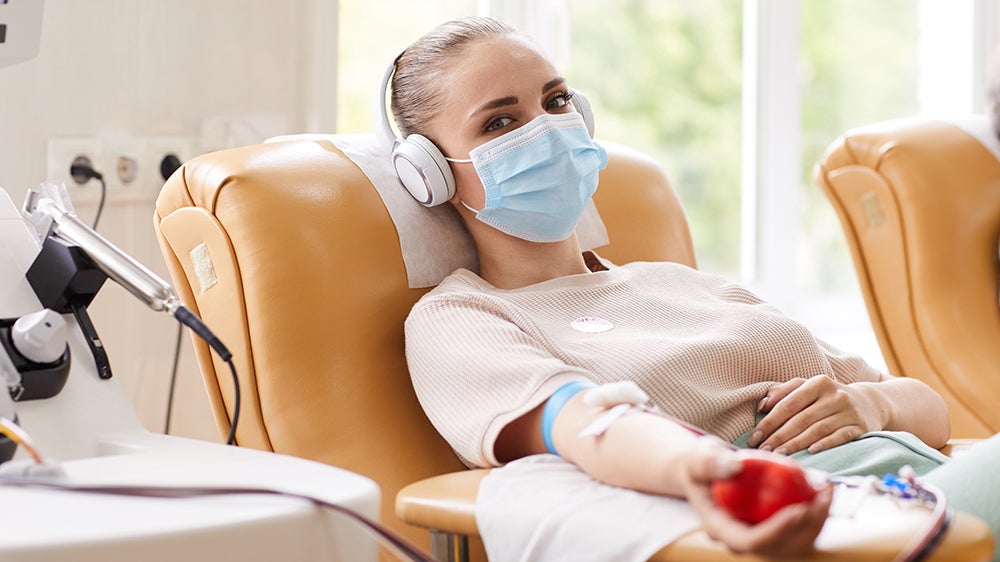The journey of blood donation
August 4, 2021
Every two seconds someone in the U.S. needs blood. Whether it’s for cancer treatments or a bad burn, donated blood helps save lives every day. Blood donation is needed now more than ever. The COVID-19 pandemic has created a blood shortage across the country. Here’s why your donation matters:
What makes up your blood?
Your blood is primarily made up of three transfusable components: red blood cells, platelets and plasma. Red blood cells help deliver oxygen from your lungs throughout our bodies. Then they return to the lungs taking carbon dioxide with them for your lungs to exhale. Platelets and plasma are usually used for hemostasis or stopping a flow of blood. Platelets originate in the bone marrow and help plug or clot any vascular injury. Plasma makes up about half of your blood and its primary function is waste removal. Plasma transports waste from one area of the body to another (usually kidneys or liver) for excretion.
After a donation, your blood is broken down into these three components and can help three different individuals. That’s why one donation can save three lives.
Do’s and don’ts of blood donation
Before your blood donation there are a few things to be aware of, especially if it is your first time.
Do |
Don't |
|
|
|
|
|
The donation process is similar no matter the center you choose. You’ll fill out a questionnaire over your medical, travel and personal history. After your questionnaire, they’ll check your vitals. This includes your pulse, temperature, blood pressure and hemoglobin levels. Then you’ll move to the actual donation where a sterilized needle will be inserted in your vein. The needle remains in your arm the whole time you’re in the donation chair. An average donation takes about 20 minutes. After the donation is complete, you’ll be monitored for a few minutes for any light-headedness or other symptoms. From start to finish, the average donation takes between 30-45 minutes.
How are blood donations used?
After the donation is complete, the donation center will conduct multiple screenings and test to make sure the unit of blood is safe for use. The unit of blood goes through 15 different tests and screening including tests for COVID-19 antibodies, HIV and other infectious diseases. Once the unit passes all the safety tests, it is separated into the three transfusable components of blood: red blood cells, platelets and plasma. From there, the donation is sent to medical centers that need them.
Once the donated blood arrives at a medical center, it undergoes another round of testing and screening. The donation is labeled for recipient type and then stored for when a transfusion is needed.
“We use around 13,000 units of blood per year,” said Andrea Haynes, lab director at MercyOne Des Moines Medical Center. “In the summertime, when people are out more, we see more traumas, so in the summer we usually have a higher demand for donations because of that.”
When a patient needs a transfusion, the lab will send the unit that matches the patient’s blood type and antibody screen.
“Everyone has a genetic makeup that is different,” said Haynes. “We screen for all these different types of antibodies in your blood to avoid any reactions to the donation. We make sure that blood is most compatible for you.”
Some common uses of donated blood include:
- Cardiovascular surgery
- Trauma transfusion
- Cancer treatments
- Hemolytic anemia treatment
- Clotting in your liver or liver failure
- Burns
- Organ transplant
Find out if you are eligible to donate blood or blood components and help provide this life saving service.
Let’s build you an unbeatable care circle.
- More than 20,000 providers and supporters
- The region’s highest-rated specialty services
- More locations and more personalized care
